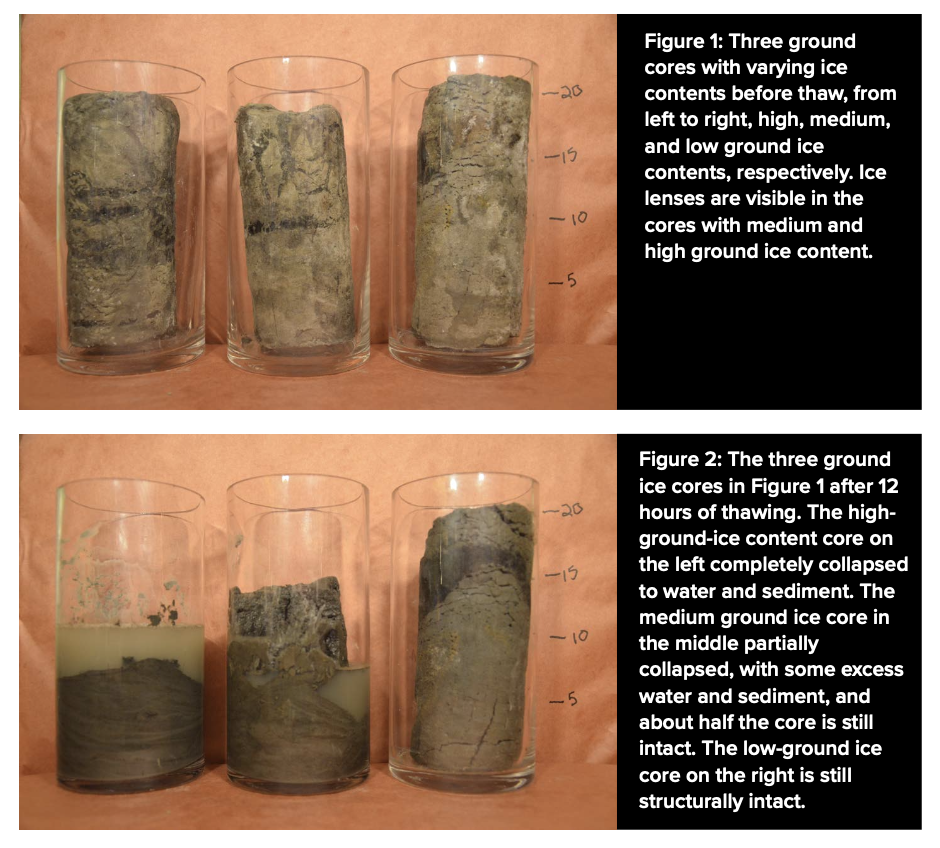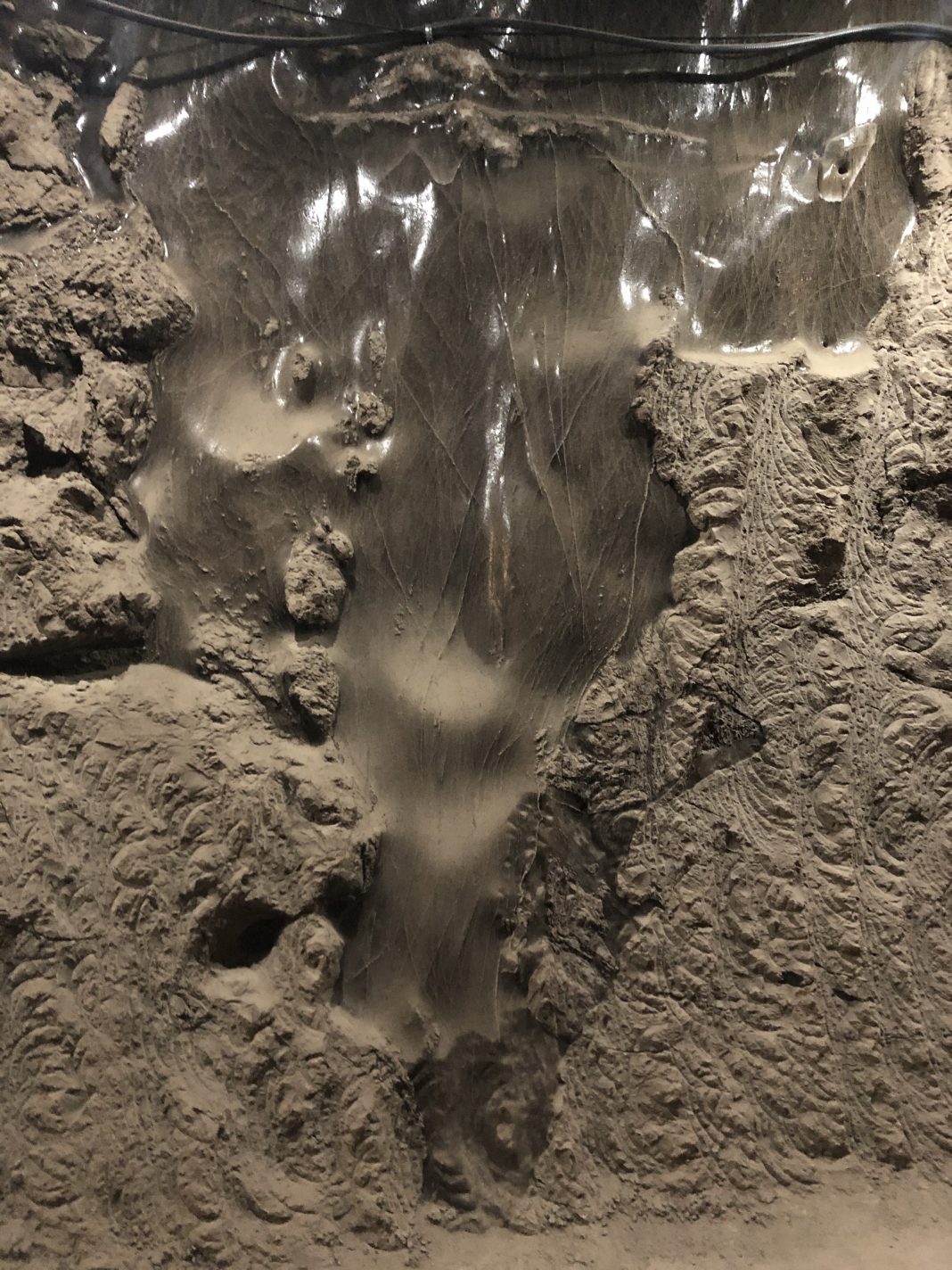Melissa Ward Jones, from the University of Alaska Fairbanks, explains the heterogeneity of permafrost conditions and how it can impact agriculture
One farmer describes clearing land and letting it thaw before cultivation to increase the soil’s temperature; another describes needing to allow the field to dry out after land clearing, as it is too wet to access and cultivate for a few seasons. The third describes land sinking and waterlogging that developed in a portion of their field a few years after clearing. Each farmer is describing a response to thawing permafrost.
Defining permafrost
Permafrost is ground material that remains at or below 0 °C for two or more consecutive years (IPA, 1998). Permafrost is defined only by temperature, not ground material composition. It is heterogeneous, and as a result, its response to thaw is dependent on its composition, with ground ice content being a primary factor.
Ground ice, any ice below the surface of the ground, ranges from nothing to large ice bodies several meters thick. Because water is in a frozen state, it can accumulate in significant amounts, far exceeding saturation in unfrozen conditions. In areas with high ground ice content, the ice provides structure to the soil and is a potential source of water (Figure 1). When the permafrost thaws, the ground ice content determines the ground response to thaw (Figure 2); it will either simply rise in temperature if it is ice-poor, or if ice-rich, the ground surface will collapse, known as subsidence or thermokarst (Ward Jones et al., 2022).
Permafrost sciences explored
A challenge of permafrost sciences is that permafrost is hidden below the ground surface, and one often does not know permafrost is ice-rich until it begins to thaw and reveals the resulting surface expression that is created from subsidence.
The evolution of thawing permafrost is complex. Thawing ice-poor permafrost can lead to overall land drying. This is due to the permafrost table being impermeable; it restricts groundwater flow to non-permafrost areas, such as the seasonally thawed layer of soil above permafrost, known as the active layer. As the active layer thickness increases, more ground is available for water to flow through, leading to overall ground drying at the surface.
Permafrost with ground ice creates wet soils when it melts and has the potential to continue subsiding until the ground ice source is exhausted. Subsidence can occur incrementally over many seasons or develop rapidly within a single season; the rate depends on the trigger, such as consistently warming summers or an uncharacteristically hot summer. Thawing ice-rich permafrost can also cause ponds to develop in fields. Challenges with subsidence and pond development have led to some farmers abandoning whole or parts of their fields.

Permafrost in high-latitude areas
Overall, permafrost is a unique feature in high-latitude areas like the Arctic and at high elevations in mountainous areas. These areas are warming the fastest, two to four times greater than the global average (Rantanen et al., 2022). This warming is increasing opportunities for agriculture; however, it can also lead to increased rates of thawing permafrost as clearing land exposes permafrost to climate-driven thaw. Therefore, it is critical to develop permafrost-conscious agricultural practices rather than assume techniques developed in southern latitudes will automatically be effective in permafrost-containing regions.
The Permafrost Grown Project, funded by the U.S. National Science Foundation, is working with farmers in Alaska to understand the interactions and feedbacks between cultivation and permafrost to develop these permafrost-conscious practices. The project is developing guides to aid farmers in understanding and identifying different types of permafrost and offers best practices and management strategies for cultivating permafrost-affected soils. These efforts will help support sustainable agriculture in Alaska and other high-latitude regions.
References
- International Permafrost Association, (1998). Multi-Language Glossary of Permafrost and Related Ground-Ice Terms. Edited by R.O van Everdingen. Calgary: Arctic Institute of North America. Version 2.0.
- Rantanen, M., Karpechko, A.Y., Lipponen, A., Nordling, K., Hyvärinen, O., Ruosteenoja, K., Vihma, T. and Laaksonen, A. (2022). The Arctic has warmed nearly four times faster than the globe since 1979. Communications Earth & Environment, 3(1), p.168.
- Ward Jones, M., Schwoerer, T., Gannon, G., Jones, B.M., Kanevskiy, M.Z., Sutton, I., St. Pierre, B., St. Pierre, C., Russell, J., and Russell, D. (2022) Climate-driven expansion of northern agriculture must consider permafrost. Nature Climate Change 12: 699–703.

This work is licensed under Creative Commons Attribution-NonCommercial-NoDerivatives 4.0 International.


